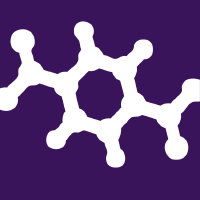Topic Menu
► Topic MenuTopic Editors



2. Department of Materials, ETH Zürich, HCI F531, Vladimir-Prelog-Weg 5, 8093 Zürich, Switzerland
Supramolecular and Functional Nanomaterials for Theranostic, Catalysis, and Sensor Applications
Topic Information
Dear Colleagues,
Smart polymeric or nano-materials equipped with stimuli-controlled supramolecular components or molecular machines have attracted a lot of attention, particularly for drug delivery, enzyme-mimicking catalysis, molecular/biosensing, imaging and therapy. Novel approaches have been utilized to synthesize new composite nanostructures for combined functions, mimicking and advancing functional enzyme systems. New methods on the effective synthesis of polymeric or organic–inorganic hybrid nanomaterials will be beneficial to investigate the biosensing, combined drug encapsulation and release and catalysis for renewable materials. Cutting-edge imaging techniques such as mass spectrometry imaging, magnetic resonance imaging and other new techniques will shed light on these bio-uptake mechanisms. Targeted therapy can be achieved by external stimuli such as pH, light, ultrasound, enzymes and biomarkers. You are cordially invited to submit a manuscript to one of the journals in this Topic.
Dr. Ken Cham-Fai Leung
Dr. Xunjin Zhu
Dr. Matthew Y. Lui
Dr. Nghia P. Truong
Topic Editors
Keywords
- biomaterials
- catalysis
- diagnostics
- nanomaterials
- sensors
- supramolecular materials
- therapy
Participating Journals
| Journal Name | Impact Factor | CiteScore | Launched Year | First Decision (median) | APC |
|---|---|---|---|---|---|

Journal of Composites Science
|
3.3 | 4.5 | 2017 | 14.7 Days | CHF 1800 |

Journal of Functional Biomaterials
|
4.8 | 5.0 | 2010 | 13.3 Days | CHF 2700 |

Materials
|
3.4 | 5.2 | 2008 | 13.9 Days | CHF 2600 |

Nanomaterials
|
5.3 | 7.4 | 2010 | 13.6 Days | CHF 2900 |

Polymers
|
5.0 | 6.6 | 2009 | 13.7 Days | CHF 2700 |

MDPI Topics is cooperating with Preprints.org and has built a direct connection between MDPI journals and Preprints.org. Authors are encouraged to enjoy the benefits by posting a preprint at Preprints.org prior to publication:
- Immediately share your ideas ahead of publication and establish your research priority;
- Protect your idea from being stolen with this time-stamped preprint article;
- Enhance the exposure and impact of your research;
- Receive feedback from your peers in advance;
- Have it indexed in Web of Science (Preprint Citation Index), Google Scholar, Crossref, SHARE, PrePubMed, Scilit and Europe PMC.


